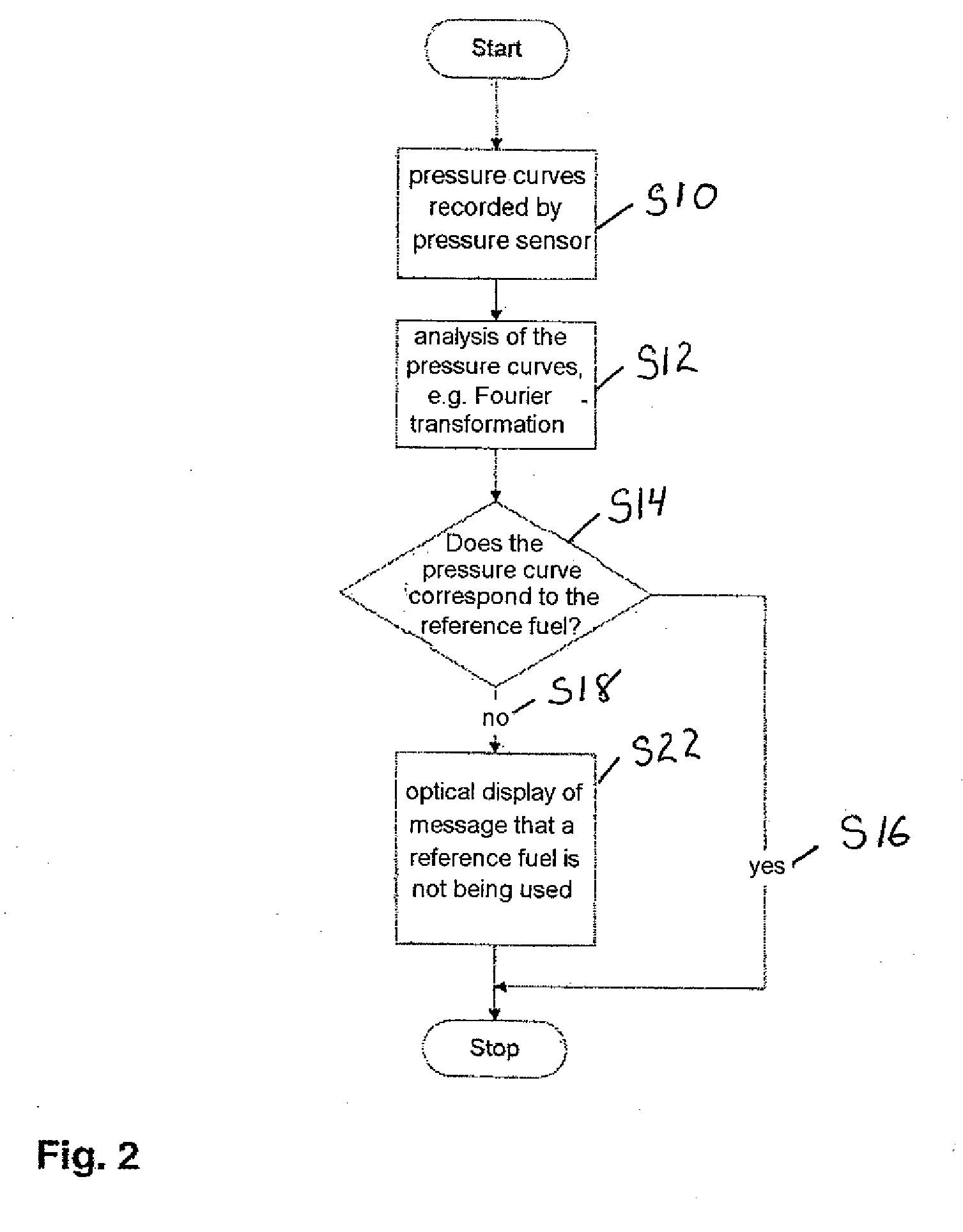Determination of fuel characteristics and their influence on exhaust gas emissions during operation of an internal combustion engine
a technology of fuel characteristics and exhaust gas, which is applied in the direction of machines/engines, electric control, instruments, etc., can solve the problems of uncontrollable change in the material properties of engine oil, uncontrollable change in the emission of engine oil, and thermal damage to the catalytic converter, etc., to optimize the effect of the exhaust gas aftertreatment system
- Summary
- Abstract
- Description
- Claims
- Application Information
AI Technical Summary
Benefits of technology
Problems solved by technology
Method used
Image
Examples
Embodiment Construction
[0040]To further explain the control sequences mentioned above, some of these processes will be described in the following by way of example with reference to block diagrams in FIGS. 1 to 5. The described control sequences are preferably embedded in prioritized control routines which are carried out by an electronic engine control system typically provided in modern engines for controlling the engine.
[0041]The block diagram in FIG. 1 shows a procedure for determining the use of an unauthorized fuel and the storage of this information for retrieval at a later time.
[0042]After the start of the control sequence, pressure curves in the fuel system are recorded at predetermined times by one or more pressure sensors (S10). The times are selected in such a way that it is possible to gain information about the fuel in the fuel system by means of the pressure curves. In the next step (S12), the determined pressure curve is processed by an analysis method, e.g., a Fourier transformation of th...
PUM
 Login to View More
Login to View More Abstract
Description
Claims
Application Information
 Login to View More
Login to View More - R&D
- Intellectual Property
- Life Sciences
- Materials
- Tech Scout
- Unparalleled Data Quality
- Higher Quality Content
- 60% Fewer Hallucinations
Browse by: Latest US Patents, China's latest patents, Technical Efficacy Thesaurus, Application Domain, Technology Topic, Popular Technical Reports.
© 2025 PatSnap. All rights reserved.Legal|Privacy policy|Modern Slavery Act Transparency Statement|Sitemap|About US| Contact US: help@patsnap.com



